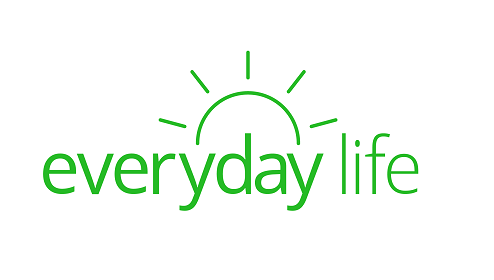Life insurance policies aren’t just for adults. You can also get life insurance for your child.
Child life insurance can provide peace of mind to parents and families if the child were to pass away. Life insurance may be an option for families with a son or daughter who may have a genetic condition or serious health problem that increases their risk of premature death. Term or whole life insurance for children can cover expenses like funeral and burial costs, medical bills, student debt, and income replacement.
You may be asking yourself: Should I buy life insurance for my child? Truth is, child life insurance plans aren’t for every household. There are child life insurance age limits involved, and there’s probably a high chance that you’ll never need this insurance.
Consult closely with an insurance expert, shop around carefully for child life insurance quotes, and compare plans, coverage amounts, and premium costs to determine the best life insurance for kids.
KEY TAKEAWAYS
- Children’s life insurance works the same as an adult’s policy and is much cheaper than an adult’s life policy.
- Term life and whole life are options for a child’s life insurance policy.
- Parents may want life insurance for their child if they may die prematurely because of a genetic condition or illness.
- Life insurance can help with funeral costs, college debt, medical bills and income replacement.
How does life insurance for children work?
A life insurance policy for a child works the same way as it does for an adult. If the child passes away, his or her beneficiaries — usually the parents, guardians, or caregivers — receive a death benefit payout.
Depending on the type of life policy, it will remain in effect as long as the premiums are paid.
“If the parents of the child are looking to provide enough coverage to protect themselves from their child’s possible death, getting coverage for the child makes sense,” says Jordan Shanbrom, an independent insurance broker with California Life Coverage in Lancaster, California.
Shanbrom says good candidates for a child life insurance policy include:
- Households where the child is a worker in their business whose income would need to be replaced if they die.
- A child attending college whose parents co-signed on the loan.
- Families who are concerned that their child may die prematurely due to a genetic condition or illness.
There are two main types of life insurance policies for children: term life insurance and whole life insurance, which is a form of permanent life insurance.
“Term life insurance provides debt protection for a stated period, such as one, five, 10, or 20 years. These policies are renewable, but premiums increase with age. No medical exam is required in most cases for child term policies,” explains Mark Friedlander, director of Corporate Communications for the Insurance Information Institute in St. Johns, Florida.
With term life insurance coverage, annual premiums remain the same over the specified term. If the term expires and the child remains living, no payment is issued and the policy dissolves. Once the term expires, it’s often far more costly to continue coverage, as rates for the child will go up due to his or her advancing age.
Whole life insurance plans don’t have a fixed duration or “term”; they provide insurance protection for the child’s entire lifetime, so long as premiums remain paid, and the annual premium cost never increases.
“Most people choose whole life insurance for children since it is built to last the child’s entire life. A permanent life insurance policy provides not only a death benefit, but it also has living benefits like the ability to accumulate cash value with the money you put into it,” Friedlander adds.
With a whole life policy, the child can take ownership of their policy and continue the coverage once the child reaches adulthood. Or they can discontinue the policy.
Average cost of life insurance for children
The good news is that a child life insurance policy is relatively affordable, especially compared to other types of insurance policies.
“Premiums will vary by carrier and policy type, but in many cases, policyholders should expect to pay between $3 and $7 per year for every $1,000 of coverage,” according to Brian Martucci, the Minneapolis-based finance editor for Money Crashers.
Friedlander echoes those thoughts.
“Rates are very low in most cases. For example, the average annual U.S. premium for a $25,000 whole life policy on a newborn is $140, which equates to less than $2.70 per week,” he notes.
However, be aware that life insurance companies can charge two to eight times more for whole life than equivalent term policies.
Best life insurance for children
Several life insurance companies offer life insurance products for children. Among the best life insurance for children options, and the most popular, are:
Mutual of Omaha
Type of coverage: Children’s whole life
Coverage amounts: $5,000 – $50,000
Included riders: Guaranteed insurability rider, which protects the future insurability of the child during certain life events. Waiver of premium due to death of owner rider, which waives the premium payments allowing time to transfer the policy to a new owner (availability varies by state).
“This policy is great for anyone looking for children’s life insurance from ages 14 days to 17 years old. Mutual of Omaha has some of the most competitive premiums on the market for this type of product and has a very high financial rating,” says Jake Irving, owner of Willamette Life Insurance in Beaverton, Oregon.
Gerber
Type of coverage: Whole life (Grow-Up Plan)
Coverage amounts: $5,000 – $50,000
Included rider: Guaranteed purchase option rider, which allows the insured child, after turning 18, to get additional life insurance without proving insurability.
“This policy is best for those looking to protect their child’s future insurability and is available from 14 days to 14 years old,” says Irving. “Regardless of when the plan was purchased, the coverage doubles on the policy anniversary date during the 18th year of the insured child. The child then becomes the policy owner when they turn 21. Gerber Life Insurance has been insuring American families since 1967 and is a financially strong company that you can trust.”
State Farm
Type of coverage: Term life rider (linked to a parent’s whole or term life policy)
Coverage amounts: Up to $20,000
Included rider: This rider costs $50 annually for all the children in your family, including kids born after adding the rider. It remains in effect until each child turns age 25. At that time, it can be converted to an ongoing whole life or term option with no requirement to prove insurability. However, you can’t purchase this as a standalone policy. Instead, it must be added as a rider to your own policy.
CVS/Aetna
Type of coverage: Children’s term insurance rider
Coverage amounts: $2,500 – $10,000 per child
Included rider: This rider is available with Aetna’s whole life final expense insurance. It provides coverage for children through the age of 25 at issue and is designed for grandchildren, too. The coverage amount chosen needs to be the same for each child, with a maximum of nine children allowed.
Pros and cons of child life insurance
As with any insurance product, there are advantages and disadvantages to consider.
Child life insurance pros
One of the biggest reasons that families obtain a child insurance policy is to guard against the child not being able to get a policy because of a future health condition.
A child life insurance plan can include a guaranteed coverage benefit to ensure the opportunity to purchase additional life insurance at certain ages and life events without proof of health or a medical exam required.
“I often recommend whole life for children so that the parent never has to worry about their child being declined for insurance in the future,” Shanbrom suggests. “I have had clients’ children develop a heart condition or cancer by ages 16 to 25 and, once diagnosed with said conditions, it is difficult to reapply for coverage or high amounts of coverage in the future.”
Another top reason to get a child life insurance policy is low cost.
“Since the cost of life insurance depends largely on age and health, purchasing a life policy when your child is young can lock in a low premium for the entire policy payment term if you choose term insurance or even for the child’s lifetime if you choose a whole life insurance policy,” says Friedlander.
A permanent life insurance policy also can accumulate cash value year after year. Cash value allows the policyholder to tap into a life insurance policy while alive.
“The earlier you start, the longer the cash value can build, so when you purchase a life insurance policy for children when they are young, the cash value has a lot of time to grow before they may need to use it,” continues Friedlander. “And, if ownership has been transferred to the adult child, they can even borrow against their cash value if needed.”
Last, having life insurance in place for your child can protect your family from financial distress. The death payout can help cover medical bills, funeral and burial expenses, your child’s student debt, and lost income if your child worked for your business.
Child life insurance cons
Taking out a life insurance policy on your child has its downsides. For one, there’s always the risk that, with a term policy, your child will outlive the policy’s term (a good thing, of course). Once that term expires, premium rates are likely to increase dramatically, which may discourage you from renewing the policy.
“Other disadvantages include the fact that coverage limits tend to be low, often maxing out at $75,000, and a low rate of return on the money you invest in a whole life insurance policy. A 529 College Savings Plan, for example, offers a much higher rate of return on your dollar,” says Friedlander.
“Another con of getting insurance is the lack of control the child has on the policy. With a term policy, once it expires, they would have to reapply and they could be declined. Also, once they turn 18 years old, most parents switch the payor of the policy to the child; the child may ignore or forget about that bill and the policy may get canceled,” says Shanbrom.
Child life insurance age limit
The rules on age limits for child life insurance can vary by provider.
“Most carriers allow coverage to begin from as early as two weeks and to as late as 17 years. There are a few who offer new policies at older ages, but they are few and far between,” says Ryan Cicchelli, founder of Generations Insurance & Financial Services in Cadillac, Michigan.
Many households choose to purchase their first child life insurance policy when the child is an infant or toddler.
“Depending on the laws in your state of residence, minors generally have the option to take ownership of their policy when they reach the age of maturity — typically age 18 or 21,” Martucci says. “Parents can maintain ownership if desired, as well.”
How much coverage should you buy?
The amount of life insurance you should get depends on your needs and unique situation.
“All possible factors and their likelihoods must be considered prior to determining a face amount on your policy,” Cicchelli recommends. “If your intention is purely to cover final funeral expenses, the face amount should reflect that. If there are to be considerations for grief counseling or any other possible outline costs, the face amount should reflect that. If investment possibilities are important, that opens an entirely different avenue of conversation.”
The bottom line? Purchase only what’s necessary.
“Life insurance is not intended to make people rich. It is intended to transfer the risk of financial loss, including the financial loss of a child,” adds Cicchelli.
If you’re primarily concerned about paying for final expenses, Shanbrom advises coverage between $5,000 and $40,000. If you aim to replace lost income, a term policy for the exact replacement amount, typically starting at $50,000, might make more sense.
Why should you buy children’s whole life insurance?
Any parent concerned about his or her financial capacity to absorb the cost of a child’s protracted illness and/or death should consider purchasing a life insurance policy for their child.
“Likewise, any parent or grandparent who wants to create a long-term store of value that will eventually pass to their child or grandchild should consider whole life insurance, although it’s certainly not the only or even the best investment to create for your child or grandchild,” Martucci says.
Young, healthy children aren’t typically seen as needing life insurance. “But having that coverage in place could prevent you and them from future financial burdens if an accident or illness occurs,” says Friedlander.
How to compare child life insurance quotes
It’s a wise idea to shop around, receive multiple child life insurance quotes, and compare policies carefully based on coverage amounts and premium costs. Make sure to research an insurance company’s financial strength. A good place to start is with Insure’s Best Life Insurance Companies.
“Avoid responding to a direct-mail advertisement without first getting multiple quotes online or through an insurance agent,” suggests Martucci.
The Insurance Information Institute recommends getting a minimum of three quotes for any type of insurance product.
“Work with your insurance professional, who can obtain multiple quotes and compare coverages. You can also use online tools to easily compare quotes,” Friedlander says.
If your child qualifies for a policy, “applying and going through simplified underwriting can be done within 48 hours, and approval is often given the same day or within two days — depending on the complexity of the case,” adds Shanbrom.











